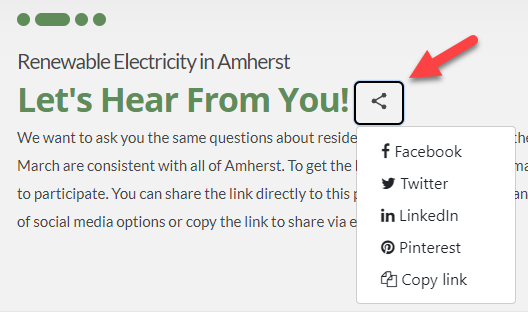Energy Sources
What is Renewable Energy?
Energy sources from fossil fuels like gas, coal, and oil don't only harm our environment through the release of greenhouse gases (GHGs) — they are also limited resources that will run out over time. Renewable energy comes from natural sources (like sunlight, wind, and hydro) that don't run out. For example, solar panels capture sunlight to make electricity for homes, wind turbines use the wind's energy to generate power, and hydropower plants use flowing water to create electricity. Not only are renewable energy sources more reliable and sustainable than fossil fuels, they also generate electricity without harming the environment, as they release limited amounts of carbon pollution when generating energy.
Energy Sources
Where Does Energy Come From in Our Region?
Right now, New England's energy is primarily sourced from burning gas, a fossil fuel that makes up 52% of our energy and releases greenhouse gases (GHGs). However, our region also leads in sourcing power from nuclear energy (26%), renewables like solar and wind (12%), and hydropower (7%). Increasing the share of clean energy we use in our region will decrease our contribution to climate change and help us build a more resilient and sustainable community.
Renewable Electricity in Amherst
What is Community Choice Aggregation?
Due to our extensive tree canopy, some of our neighbors are not able to install solar on their rooftops. That's why we have other options, like Community Choice Aggregation. We're actively working with Northampton and Pelham to launch this great new opportunity under the Valley Green Energy program.
Community Choice Aggregation (CCA) is a program that towns and cities can adopt to switch everyone in the community over to cleaner energy. Electricity is purchased in bulk from a competitive supplier on behalf of all residents. Through this process, residents can get access to cleaner energy sources for a reduced rate.
Did you know that Massachusetts was the first state to allow Community Choice Aggregation? Chapter 164 of the 1997 Acts opened the door to CCA for every community in Massachusetts - leading the way for nine other states to join over the following 24 years. Learn more at the EPA website.
Renewable Electricity in Amherst
Valley Green Energy
Amherst, Northampton and Pelham have partnered in creating an inter-municipal Community Choice Aggregation (CCA) called Valley Green Energy. This program is in line with our larger goals of energy efficiency and carbon reduction in Amherst. In fact, participants in Valley Green Energy will automatically receive an additional 10% renewable energy content for 13.994 ¢/kWh, a price that will be lower and more stable than the Eversource residential electricity supply prices (14.023 ¢/kWh starting in August) in place at launch. However, because the utilities’ prices change, and future prices are unknown, future savings cannot be guaranteed.
The program will officially launch on November 1st, 2024! Make sure to review the program options at the link below.
Renewable Electricity in Amherst
Best Opportunities for Solar
The Town of Amherst has worked hard to leverage Massachusetts incentives for renewable energy in our community. As a part of this, our Town has taken the lead on assessing how feasible solar is in different parts of our community, based on both land use and community priorities.
The map created through these efforts is available for use in determining whether solar panels are an option on residential units, commercial buildings, open spaces, and more.
For a deeper dive into how the map was created and to read the full results of the community survey, check out the May 2023 Town-Wide Solar Assessment Report
Renewable Electricity in Amherst
Find Out if Your Property Can Support Solar Installations
The map below was created from Amherst's Solar Feasibility Assessment, which identified which areas in our community appear to be the most feasible for solar implementation - based on both sun exposure and existing infrastructure.
Search your address using the magnifying glass icon on the right or zoom into your property on the map. Then check to see what color(s) from the legend are present on your property. Blue and purple mean there is a high feasibility that your property is well suited for solar panels. Yellow and purple are less feasible for solar installations.
Is your property not well-suited for solar panels? Don't worry - try checking with your electricity provider to see if you can opt-in to renewable-sourced electricity!
Renewable Electricity in Amherst
Let's Hear From You!
We want to ask you the same questions about residential solar to make sure the results we received in March are in line with the opinions of all the residents of Amherst. To get the best results, we need as many residents as possible to participate! After taking the survey yourself, you can share the link directly to it using the share icon and selecting from a variety of social media options or copy the link to share via email, text, etc.
Energy for Heating and Cooling
Heat Pumps
Heat pumps are energy-efficient devices that both heat and cool buildings. They work by moving heat from one place to another, rather than generating it directly. In cold weather, they extract heat from the outside air or ground and transfer it inside to warm your home. In hot weather, they do the opposite, taking heat from indoors and moving it outside to cool your space. This process helps save energy and is environmentally friendly, making heat pumps a popular choice for heating and cooling.
MassSave has rebates and incentives for heat pump conversions. See how much you qualify for on MassSave's website.
What You Can Do
Clean and Renewable Energy Resources
Electrifying your home is one way to make sure you can take advantage of renewable energy sources.


